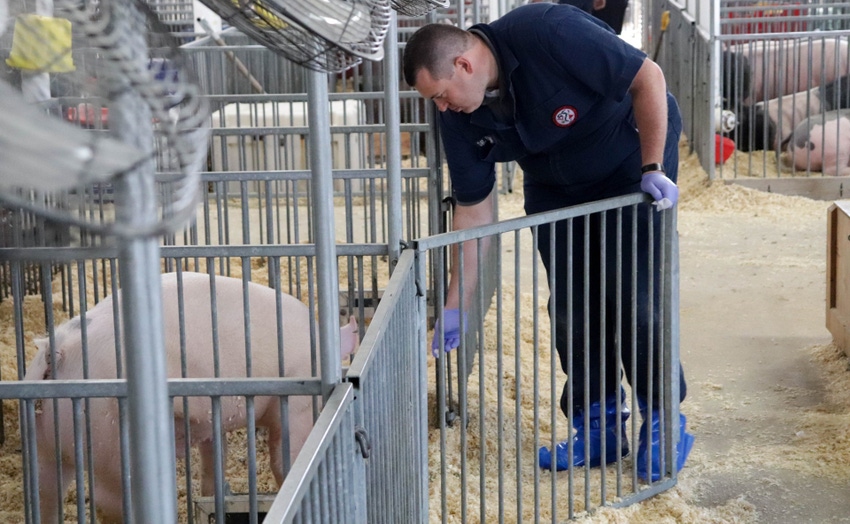Ohio State veterinary team travels to county and state fairs across U.S. in effort to identify emerging influenza strains.
August 12, 2019

For researchers with The Ohio State University College of Veterinary Medicine, the work to identify new influenza strains and increase the effectiveness of the flu vaccines begins in swine barns at state and county fairs nationwide, according to an announcement from the college.
According to the Centers for Disease Control & Prevention, the deadly 2009 flu pandemic, which originated in pigs, resulted in 60 million cases of the flu in the U.S. and more than 12,000 deaths in people.
Ohio State said after the 2009 flu pandemic, Andrew Bowman and his colleagues began looking to the fair circuit for answers. They travel to more than 100 fairs each year, swab the snouts of exhibition pigs and take the samples back to the lab to identify new strains of the flu, the college said.
“We get pigs from lots of farms in one spot, so we can do surveillance rather efficiently instead of going farm to farm to find out what flu strains are out there,” said Bowman, associate professor of veterinary preventive medicine at Ohio State. “If we’re able to detect that there’s likely influenza in the samples, then we’ll try to grow that virus and use that research to help offer a more broadly protective vaccine.”
For Bowman’s Animal Influenza Ecology & Epidemiology Research Program team, fairs are an ideal setting to identify these new viruses. The commingling of pigs from numerous sources raised under varied management programs provides a conducive environment for the virus to spread among animals and potentially from pigs to humans, the announcement said.
“The flu virus is always changing, so with the current vaccine technology, we’re always playing catchup. We have to make the best guess for what we’re going to have circulating and try to match that the best we can,” Bowman said.
You May Also Like


.png?width=300&auto=webp&quality=80&disable=upscale)
